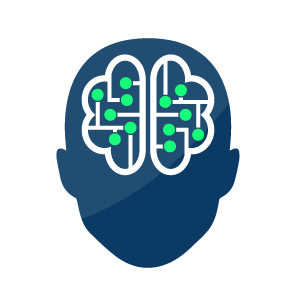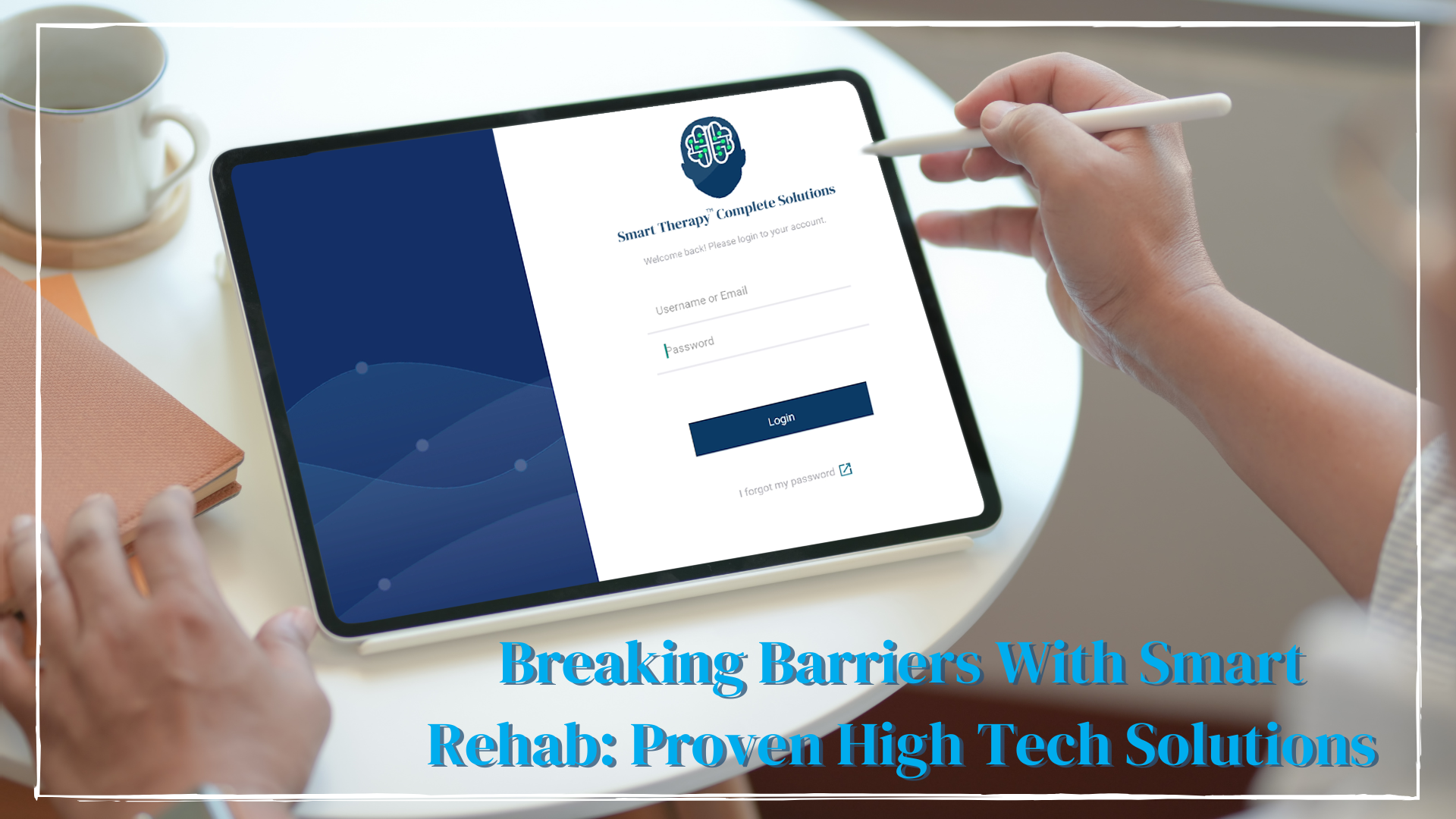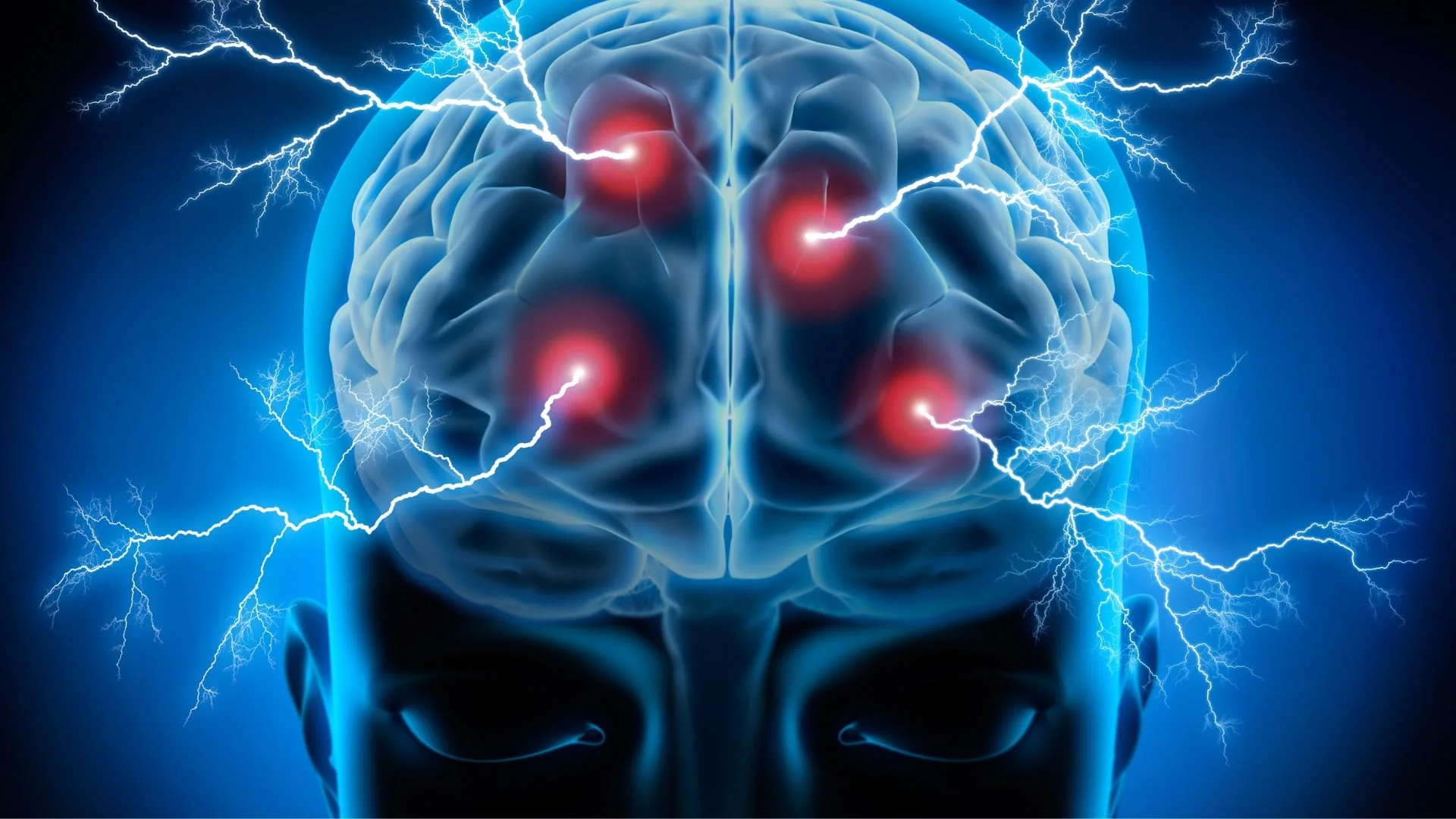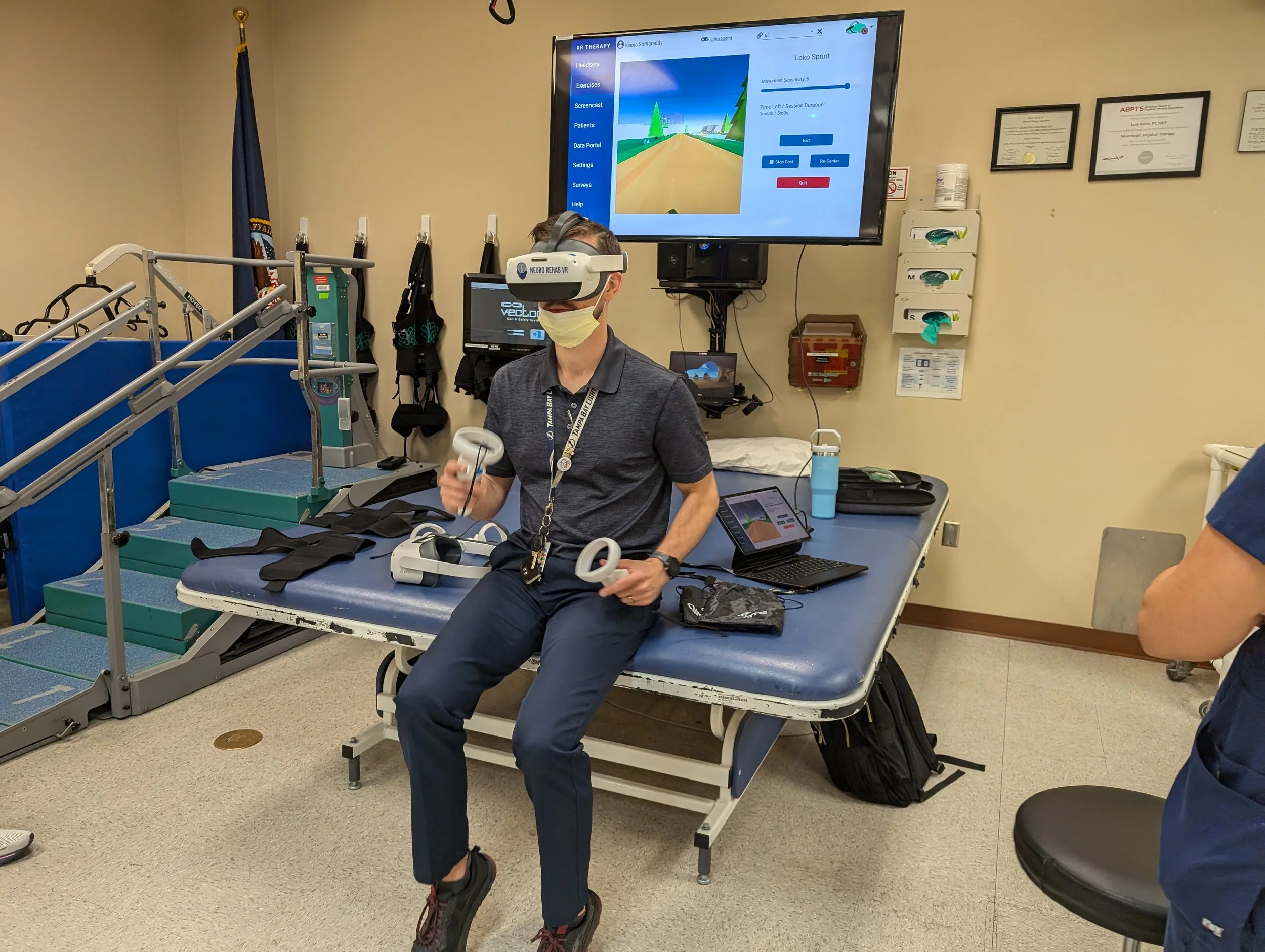Breaking Barriers With Smart Rehab: Proven High Tech Solutions
Written by: Brianna Hodge
Virtual reality (VR) in rehabilitation isn’t just a futuristic concept anymore—it’s here, changing lives in ways we never imagined. If you’re a physical therapist, occupational therapist, or rehab specialist, you’ve probably heard of immersive therapy tools. But how do they really work? And more importantly, do they make a tangible difference for patients recovering from neurological injuries, strokes, or chronic pain?
Enter the Smart Therapy™ Complete Solution by Neuro Rehab VR, a game-changing platform designed to transform the rehabilitation process using virtual reality. This deep dive will take you through the science, real-world case studies, and research backing Smart Rehab, giving you a clear understanding of how it’s revolutionizing neuro rehab.
The Science Behind Smart Rehab: How Virtual Reality Enhances Neuroplasticity
At its core, rehabilitation is about neuroplasticity—the brain’s ability to reorganize and form new neural connections in response to injury or disease. Traditional therapy relies on repetitive exercises to promote this rewiring process. The Smart Rehab Solution enhances this process by engaging patients in interactive, immersive environments that make therapy more stimulating and effective.
Real-World Research: Does It Actually Work?
Scientific studies consistently highlight the benefits of VR-based rehabilitation. A systematic review published in the Journal of NeuroEngineering and Rehabilitation found that VR therapy leads to significant improvements in motor function for stroke patients, particularly in upper limb recovery (Henderson, Amy, et al). Similarly, research in Frontiers in Neurology demonstrated that VR-based gait training can improve walking ability in patients with Parkinson’s disease (Pelosin, Elisa, et al.).
One of the biggest advantages of Smart Rehab is its ability to increase patient engagement. Traditional therapy can feel repetitive and exhausting, leading to high dropout rates. But with VR-based rehabilitation, patients often forget they’re even in therapy because they’re focused on completing tasks in an immersive world—whether it’s walking through a virtual park or playing a game that challenges their coordination.
How the Smart Therapy Complete Solution Works
The Smart Therapy Complete Solution by Neuro Rehab VR is a comprehensive platform designed specifically for neurorehabilitation. Unlike off-the-shelf VR games, this system was built with clinical input to ensure every experience aligns with evidence-based therapy principles.
Here’s what makes the Smart Therapy Complete Solution unique:
Personalized Therapy Plans: The system adapts to each patient’s abilities and progress, providing customized exercises based on real-time data.
Gamified Engagement: Patients stay motivated by completing virtual tasks that mirror real-world movements, such as reaching, grasping, and stepping.
AI-Driven Insights: Therapists can track patient progress with AI-driven analytics, allowing for data-backed clinical decisions.
Immersive Environments: Therapy sessions take place in engaging virtual settings that reduce the boredom and fatigue associated with traditional rehab.
Here is its biggest pain points in neuro rehab:
Patient Engagement: Many patients struggle with staying motivated during therapy. Gamified experiences in Smart Rehab make rehabilitation sessions more interactive and enjoyable.
Clinician Burnout: Therapists often face high workloads, leading to fatigue and reduced effectiveness. The AI-driven automation in our solution helps reduce clinician workload by tracking progress and adjusting therapy plans dynamically.
Scalable Therapy Solutions: The Smart Therapy Complete Solution is designed for use in hospitals, outpatient clinics, and even at home, making rehabilitation more accessible for patients in different settings.
The VA Healthcare System
Neuro Rehab VR has been making waves in the Veterans Affairs (VA) healthcare system, providing innovative VR therapy solutions that help veterans recover from neurological conditions, strokes, and traumatic brain injuries (TBIs).
A 2022 VA News article titled Virtual Trips Around the World highlights how VR-based rehabilitation is being used to enhance patient engagement and motivation by allowing veterans to virtually explore destinations across the globe while undergoing therapy. This immersive approach not only makes therapy more enjoyable but also helps improve cognition, balance, and mobility by integrating real-world movement challenges into a stimulating virtual environment. The article emphasizes how Neuro Rehab VR's technology is reshaping rehabilitation by making therapy more interactive, personalized, and effective for veterans in the VA healthcare system (Sage, Debra).
Case Study: Stroke Recovery with Smart Rehab
Patients who have engaged with Neuro Rehab VR’s Smart Therapy Complete Solution showed a 42% improvement in upper limb function compared to those receiving conventional therapy alone.
One patient, a 62-year-old stroke survivor, shared that VR therapy helped them relearn how to move their arm while keeping them mentally engaged:
“I actually look forward to my therapy sessions now. Instead of counting reps, I’m trying to beat my own score in the VR environment. It makes a huge difference in my motivation.”
This isn’t just an isolated case—rehab centers across the country are seeing faster recovery times and higher patient satisfaction with Smart Rehab-based rehabilitation.
Affordability: Making Cutting-Edge Rehab Accessible
One of the biggest barriers to innovative rehabilitation solutions is cost, often limiting access to advanced therapies for those who need them the most. Traditional in-person therapy sessions can be expensive, requiring ongoing visits that add up in both time and financial commitment, creating a significant burden for patients, clinics, and healthcare facilities. The Smart Therapy Complete Solution is specifically designed to be an affordable and scalable alternative, ensuring that cutting-edge rehabilitation technology is not reserved for only a select few but available to a broad spectrum of patients and providers.
By integrating AI-driven automation and data-backed therapy plans, our product reduces operational costs for clinics and hospitals, allowing them to deliver high-quality care more efficiently. This cost-effectiveness extends to home therapy programs as well, providing patients with remote rehabilitation options that minimize transportation costs and increase accessibility, particularly for individuals in rural or underserved areas.
Additionally, it supports multiple reimbursement pathways, ensuring that clinics and healthcare providers can maximize insurance coverage for VR-based therapy. The flexible pricing models are designed to adapt to various budget constraints, making it easier for facilities of all sizes to implement the Smart Therapy Solution without financial strain. By bridging the gap between affordability and innovation, Neuro Rehab VR is making high-tech rehabilitation a realistic and sustainable solution for the modern healthcare landscape.
AI Automation & SOAP Note Integration
One of the most time-consuming and tedious tasks for therapists is documentation, which requires careful tracking of patient progress, session details, and treatment adjustments. Traditional documentation methods can be manual and repetitive, taking valuable time away from direct patient care and contributing to clinician burnout. Many therapists find themselves spending extra hours completing SOAP notes, which can add stress and reduce efficiency in an already demanding work environment.
The Smart Therapy Complete Solution simplifies this process with AI-driven SOAP note automation, allowing therapists to generate structured and accurate clinical notes effortlessly. By leveraging real-time data tracking, the system automatically updates patient progress, records therapy outcomes, and suggests clinical insights based on performance. This intelligent automation ensures that documentation is efficient, compliant, and less time-consuming, reducing the administrative burden on therapists.
With its streamlined workflow, clinicians can focus more on patient care rather than paperwork, improving treatment quality and therapist efficiency. Additionally, the system’s secure and organized record-keeping enhances collaboration and continuity of care, making rehabilitation more effective for both therapists and patients. By reducing documentation fatigue, it helps create a more balanced and productive therapy environment where patient recovery remains the top priority.
Continuing Education Units (CEUs) and Training
Staying up to date with the latest therapy techniques is essential for rehabilitation professionals committed to providing the best possible care. As technology advances, clinicians must continuously learn and adapt to new tools and treatment methods to stay at the forefront of rehabilitation. However, finding relevant and high-quality continuing education opportunities can be challenging amid a busy clinical schedule.
To support therapists in this journey, Neuro Rehab VR offers CEU-accredited training programs designed to enhance expertise in VR-based rehabilitation. These courses provide hands-on training, best practices, and evidence-based methodologies to help therapists seamlessly integrate The Smart Therapy Solution into their treatment plans. Whether new to VR therapy or experienced with digital rehabilitation tools, participants gain practical skills that can be immediately applied in clinical settings.
Beyond technical training, these courses explore the science behind VR rehabilitation, helping therapists understand neuroplasticity, motor learning, and cognitive engagement. Participants also learn how to analyze patient data, customize therapy interventions, and improve patient motivation using gamified VR experiences.
By completing CEU-accredited training, therapists earn professional development credits while strengthening their expertise in innovative rehabilitation techniques. These certifications help clinicians stay ahead of industry trends, ensuring they can effectively implement cutting-edge therapy solutions that improve patient outcomes and streamline clinical workflows.
Regulatory Compliance: FDA-Registered & HIPAA-Compliant
Neuro Rehab VR prioritizes patient safety, data security, and regulatory compliance, ensuring that its solutions meet the highest industry standards. The Smart Therapy Complete Solution is FDA-registered, meaning it has undergone thorough testing to meet medical device safety and effectiveness standards. This certification gives clinicians and healthcare facilities confidence that it is a safe and effective tool for rehabilitation.
In addition, it is fully HIPAA-compliant, ensuring secure data encryption and strict privacy protocols to protect patient information. This safeguards sensitive health records and prevents unauthorized access, allowing clinics and hospitals to integrate the system with full confidence in data security.
By adhering to medical, ethical, and legal regulations, it provides a seamless and compliant solution for rehabilitation settings. This ensures that clinicians can focus on patient care without concerns about regulatory hurdles, making it easier to adopt advanced VR-based therapy while maintaining the highest standards of safety and compliance.
Comprehensive Therapy Benefits: Enhancing Multiple Aspects of Recovery
The Smart Therapy Complete Solution is designed to address multiple dimensions of rehabilitation. The interactive VR-based activities help improve:
Balance: Virtual environments challenge patients to stabilize their posture dynamically.
Range of Motion (ROM): Gamified exercises encourage active limb movement, increasing flexibility.
Pain Management: Immersive therapy has been shown to distract from pain and improve tolerance.
Gait Training: Realistic walking simulations assist in improving step patterns and posture.
Cognition: Problem-solving tasks and memory-based games enhance cognitive function.
Vestibular Rehabilitation: Motion-based therapy helps reduce dizziness and improve spatial orientation.
Hand-Eye Coordination: Interactive tasks improve fine motor skills and reflex responses.
By addressing these key rehabilitation areas in one integrated solution, it provides a holistic approach to neurorehabilitation, ensuring that patients receive well-rounded, effective therapy.
The Future of Smart Rehab: Where Do We Go from Here?
The future of rehabilitation isn’t just about adopting new technology—it’s about integrating smarter solutions that make therapy more effective, engaging, and accessible. As more clinical trials and case studies support VR-based therapy, we’re likely to see wider adoption in neurological rehab, pain management, and post-operative recovery.
Neuro Rehab VR isn’t just offering technology—they’re offering a new way forward for neuro rehabilitation.
-
Henderson, Amy, et al. “Virtual Reality in Stroke Rehabilitation: A Systematic Review of Its Effectiveness for Upper Limb Motor Recovery.” Topics in Stroke Rehabilitation, vol. 14, no. 2, Mar. 2007, pp. 52–61, https://doi.org/10.1310/tsr1402-52.
Pelosin, Elisa, et al. “Motor–Cognitive Treadmill Training with Virtual Reality in Parkinson’s Disease: The Effect of Training Duration.” Frontiers in Aging Neuroscience, vol. 13, 5 Jan. 2022, https://doi.org/10.3389/fnagi.2021.753381.
Sage, Debra. “Virtual Reality: Veteran on Virtual Trips around the World.” VA News, 15 Sept. 2022, news.va.gov/108553/virtual-trips-around-the-world/. Accessed 12 Feb. 2025.








